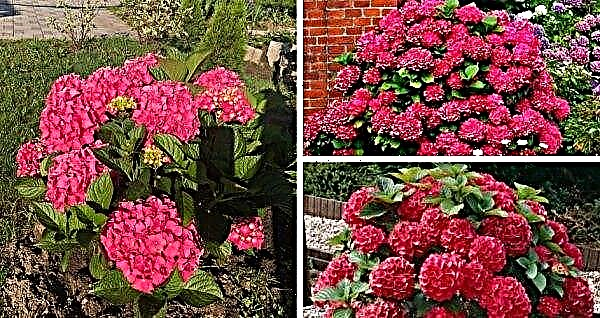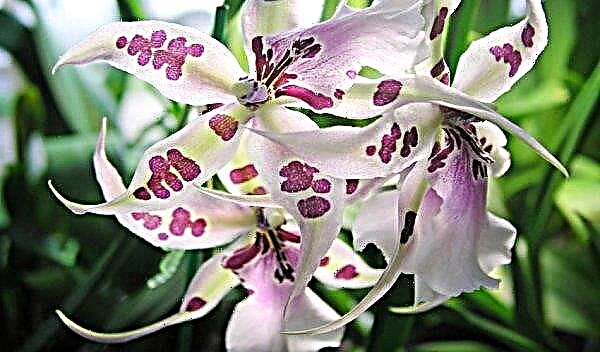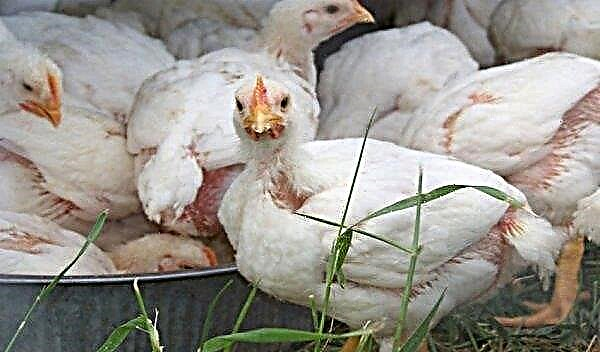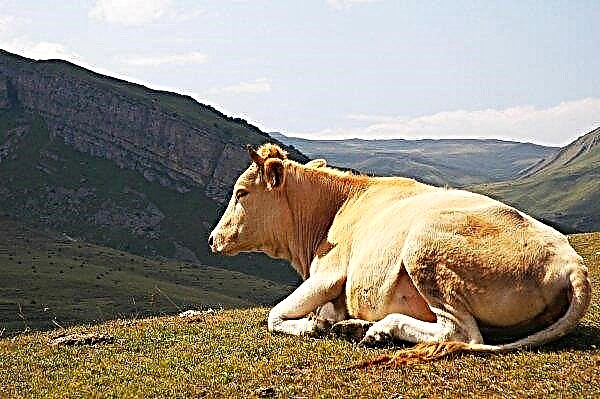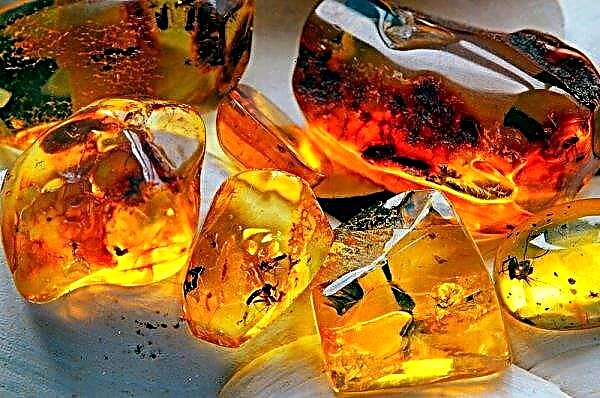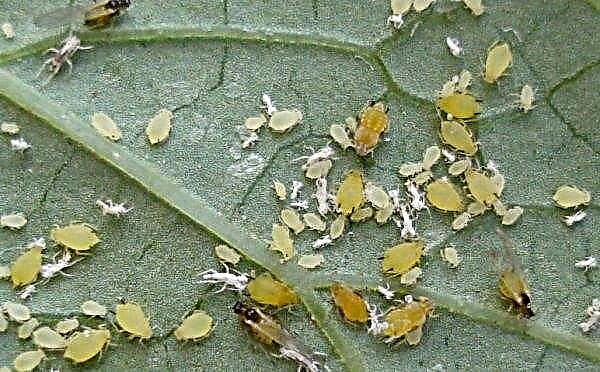The decoration of any garden or cottage is evergreen shrubs, one of which is forest juniper. This plant takes root well on the site, and with proper care it looks great in various landscape compositions.
Botanical Description
Juniper forest (juníperus) is also known as forest cypress, but it is used less often. Botanists prefer to be limited to the classic Latin name. The tree belongs to the Cypress family, grows mainly in a temperate climate, but due to active cultivation and cultivation in many countries of the world it is distributed almost everywhere, except for regions with constant low temperatures. Habitat: North America, the middle strip of Europe, Asia, Eastern Siberia. There are many varieties of this shrub, and the most common in the forests of central Russia is the common juniper (Juníperus commúnis). Forest juniper can be found in mixed, deciduous and, of course, coniferous forests.
Habitat: North America, the middle strip of Europe, Asia, Eastern Siberia. There are many varieties of this shrub, and the most common in the forests of central Russia is the common juniper (Juníperus commúnis). Forest juniper can be found in mixed, deciduous and, of course, coniferous forests.
Did you know? In ancient times, juniper was used as a talisman against evil spirits. For protection, travelers took with them a small branch of the plant.
It grows on the banks of rivers, in lowlands, valleys, on glades. Due to the density of growth in nature, this evergreen shrub forms impassable thickets, the so-called juniper groups or communities. Very often, foresters take seedlings from such groups of trees, because when they receive enough light, they grow well and rarely get sick.
Is it possible to plant juniper from the forest in the garden
For home cultivation, forest juniper is no less suitable than cultivated varieties. Moreover, if the plant is rationally looked after, it takes root and continues to fully develop on suitable soils, grows over the years and tolerates frosts, as well as winter temperature drops to -20 ° C.
How to dig juniper in the forest
Before you dig this evergreen shrub in the forest, you need to study the basic rules for transferring a plant from one place of growth to another. The most important rule: all transplantation and excavation work should be done with gloves and a protective mask. Firstly, this will protect your hands from scratches, and secondly, it will protect your lungs from fine wood dust that accumulates in the crown of the bush during growth in the forest.
Important! Juniper forest is considered a poisonous plant; it is not planted directly under the windows of residential buildings. The best place to plant is a composition in the back of the garden.
For digging you will need:
- a bucket or other plastic container for transportation;
- shovel;
- respiratory tract protection and tight fabric gloves.
An ideal time to extract a plant from the ground in the forest is early spring. It is permissible if there will still be snow on the surface of the earth. It is important to dig up before the beginning of active vegetation of juniper - no later than the end of March. The method that foresters use to mark the sunny side - fastening the tape to the branches of the plant, to the shoot fragment, where most of the sun's rays fall - also works in relation to juniper. On the plot, the bush is placed exactly the same with respect to the light source. It is extremely important to maintain a large earthen lump, because the root system of the plant is very sensitive. It is advisable to place the dug plant in a bucket or plastic box with a lump, making sure that the soil does not crumble. It is permissible to water the shrub slightly before removing from the soil. Before placement in a container, the roots together with the earth are wrapped with dense polyethylene or simply put on a package on the lower part of the juniper, wrapped in newspapers.
It is extremely important to maintain a large earthen lump, because the root system of the plant is very sensitive. It is advisable to place the dug plant in a bucket or plastic box with a lump, making sure that the soil does not crumble. It is permissible to water the shrub slightly before removing from the soil. Before placement in a container, the roots together with the earth are wrapped with dense polyethylene or simply put on a package on the lower part of the juniper, wrapped in newspapers.
How to transplant from the forest to the cottage
Before transplanting juniper from the forest to the site, you need to prepare a seat, and also make sure that the soil is suitable for this action. The best soil for the "new home" of this type of shrub is podzolic, sandy, slightly swampy soil. Soil moisture should be moderate, but not always.
Did you know? Ground cover varieties of juniper prevent landslides and landslides. That's why they are often planted where soils are prone to erosion.
In the wild, forest juniper also grows on intensely moistened soils, near marshes or directly in marshy areas. The most important thing in growing is to take care of the microclimate of the root system and carry out disease prevention twice a year. Then the shrub will grow and form a dense, dense crown.
Landing hole preparation
The dimensions of the landing recess are 70 × 70 × 70 cm. Also, do not forget that in nature, junipers without thinning grow very densely, in fact - by the wall. To avoid this and get beautiful needles, the distance between the bushes should be at least 1 meter. Before placing the seedling in the pit, a drainage layer of approximately 5 cm is laid on the bottom. The soil for falling asleep is the equal parts of turf land, sand and peat.
Before placing the seedling in the pit, a drainage layer of approximately 5 cm is laid on the bottom. The soil for falling asleep is the equal parts of turf land, sand and peat.
Seedlings preparation
Before planting, a sapling or an adult tree is carefully removed from the storage container, and then it is also carefully, without shaking the earthen lump, immersed in a pit. Sprinkle tightly with soil so that it is just above the ground level at the tree trunk. There is another way of planting: before immersing the juniper bush in the pit, they remove the whole earth from the roots and place the plant in water for 30 minutes with a growth stimulant.
Such drugs are sold ready-made in any garden store, they differ only in manufacturers and purpose (for different types of plants). Examples of growth stimulants or rooting agents: Radifarm, heteroauxin, Kornevin.
Landing algorithm
The sequence of actions during landing:
- prepare the pit;
- put a seedling in the recess;
- sprinkle with soil;
- tamp;
- water abundantly;
- mulch with pine sawdust or shavings.
Video: planting wild juniper
Care Features
Juniper forest, being an unpretentious plant, still needs quality care, especially at the stage of the first years of life in a new place. During this period, watering, fertilizer, protection against frost and the prevention of diseases characteristic of this coniferous plant are important.
Watering and feeding
Watering evergreen shrubs is often not worth it. Enough irrigation once a week in the summer and spring. In the fall, taking into account rains and fogs, as well as high humidity on some days, watering is performed only when necessary. In winter, the plants are in hibernation, so neither juniper bushes need to be fed or moistened at this time.
Important! All manipulations with the bush are carried out with gloves and a respirator. Both dust and evergreen essential oil are powerful allergens.
Feeding is carried out, mainly, of young plants or recently planted in the first 2-3 years of shrub cultivation on the site. In spring, fertilizers such as magnesium salts (20 g per 10 liters of water), Brexil Combi or Quantum (according to instructions) are applied to the soil. Allowed to apply any top dressing at the request of the owner of the site, but not more than twice a year. 
Mulching and cultivation
Both mulching and cultivation are the processes necessary for excellent growth and development of shrubs. Loosening is carried out gently and shallowly so that air enters the roots, but there is no damage. Throughout the warm period of the year, until the fall, the earth is loosened as needed, preventing the formation of a solid solid crust on the surface.
Mulching is a method of protection against parasites and a method of preserving moisture and nutrients. It is produced before wintering and immediately after planting, so that the soil remains moist longer. Pine shavings or sawdust are used as mulch.
Cropping and shaping
In the wild, forest juniper does not need to be pruned, this rule also applies when grown in a country house or in the garden of a private house. Pruning is done only when you need to remove dry or damaged branches, as well as rejuvenate the shrub. The formation of the crown is carried out using a secateurs, from spring to autumn, giving it an ideal egg-shaped or conical shape.
Wintering
At the end of October, the soil under juniper bushes is mulched with sawdust or peat. The mulch layer is 4-5 cm. Young plants (up to 4 years old) are wrapped with white agrofibre, put frameworks of thin pipes over them and covered with roofing material to avoid frostbite of the branches. Evergreen trees in adulthood usually tolerate frost and subzero temperatures well, so only mulching and agrofibre are enough.
Video: preparing juniper for winter
Diseases and Pests
Common diseases of forest juniper:
- bark nectriosis;
- shute;
- rust;
- alternariosis;
Preparations for the fight against diseases: Fundazol (2% solution), Fitosporin-M, Gamair (according to instructions).
Pests attacking the bush:
- aphid;
- scale shield;
- mole;
- mealybug.
 Pest Control Products: Calypso, Confidor, Angio. When growing on the site of evergreen coniferous shrubs, the gardener is guaranteed to receive both decoration of the house landscape and health benefits. Juniper essential oils effectively purify the air and disinfect the garden space.
Pest Control Products: Calypso, Confidor, Angio. When growing on the site of evergreen coniferous shrubs, the gardener is guaranteed to receive both decoration of the house landscape and health benefits. Juniper essential oils effectively purify the air and disinfect the garden space.

